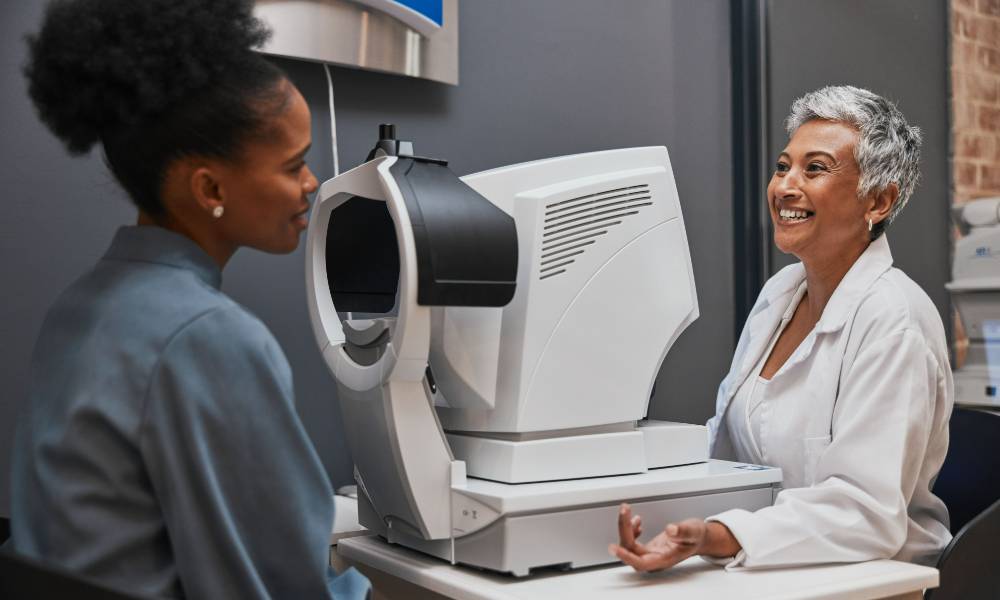The Age-Related Eye Disease Study 2 (AREDS2) is a significant research project that has influenced the way we understand and manage age-related macular degeneration (AMD) and cataracts. Conducted by the National Eye Institute (NEI), part of the National Institutes of Health, this comprehensive study aimed to evaluate the effects of vitamins and minerals on the progression of these age-related eye diseases. Here’s everything you need to know about the AREDS2 study, from its inception to its conclusions and impact on eye health.
Understanding age-related macular degeneration and cataracts
Before delving into the details of the AREDS2 study, it’s important to understand the conditions it focuses on. Age-related macular degeneration is a leading cause of vision loss in individuals aged 50 and older, affecting the macula, the part of the eye responsible for sharp, central vision.
Cataracts, on the other hand, are characterized by the clouding of the eye’s lens, leading to a decrease in vision. Both conditions significantly impact the quality of life, making research like AREDS2 vital for finding effective treatments.
The origins of the AREDS2 study
The late 1990s
The journey to the Age-Related Eye Disease Study 2 (AREDS2) began with its predecessor, the original AREDS, which was a groundbreaking study initiated in the late 1990s. The first AREDS investigated the effects of a specific combination of vitamins and minerals on the progression of age-related macular degeneration (AMD) and the formation of cataracts. Its findings revealed that the formulation significantly reduced the risk of advanced AMD in individuals at high risk of developing the condition.
Despite these promising results, questions remained about how to optimize the formula for even greater efficacy and safety, particularly concerning the inclusion of beta-carotene, which was linked to an increased risk of lung cancer in smokers.
2006
Motivated by the need to refine the original formula and explore the potential benefits of other nutrients not included in the first study, the National Eye Institute launched AREDS2 in 2006. The objective was to build on the foundation laid by AREDS by assessing the effects of adding or substituting new ingredients, such as omega-3 fatty acids and lutein and zeaxanthin, which are thought to be beneficial for eye health. This initiative aimed to improve the dietary recommendations for individuals at risk of AMD and cataracts, thereby offering a more targeted approach to preventing the progression of these age-related eye diseases.

Key objectives of the AREDS2 study
The primary goals of AREDS2 were multifaceted, designed to evaluate the efficacy of various modifications to the original AREDS supplement formula. These objectives included:
- Assessing the effectiveness of adding omega-3 fatty acids (docosahexaenoic acid [DHA] and eicosapentaenoic acid [EPA]): Given the anti-inflammatory properties of omega-3 fatty acids and their prevalence in retinal structures, researchers aimed to determine whether their addition would further reduce the risk of AMD progression.
- Evaluating the impact of including lutein and zeaxanthin in place of beta-carotene: Lutein and zeaxanthin, carotenoids found in green leafy vegetables and other foods, are concentrated in the macula and thought to protect against AMD. The study sought to investigate if these could be safer and more effective alternatives to beta-carotene, especially for smokers.
- Investigating the effects of removing beta-carotene and adjusting zinc doses: Given the potential risks associated with beta-carotene and concerns over the high levels of zinc used in the original AREDS formula, AREDS2 aimed to evaluate the impact of these changes on the formula’s effectiveness and safety.
Through these objectives, AREDS2 intended to optimize the nutritional formula for preventing AMD and cataracts, ensuring it was both effective and safe for general use.
The AREDS2 study design
AREDS2 was meticulously planned as a multicenter, randomized, double-masked, controlled clinical trial involving over 4,000 participants across the United States. The participants were aged 50 to 85 years and had varying degrees of AMD at the study’s inception. They were randomly assigned to one of several groups to receive different combinations of dietary supplements: some received the original AREDS formula with additions or substitutions as per the study’s objectives, while others received placebos or variations without certain ingredients for comparison.
The study spanned an average of five years for each participant, during which they underwent regular examinations to monitor the progression of AMD and the development of cataracts. These examinations included comprehensive eye exams, detailed imaging of the retina, and other diagnostic tests to assess changes over time accurately.
Findings and implications of the AREDS2 study
The AREDS2 study provided several critical insights:
- Addition of omega-3 fatty acids: The study found no significant benefit from adding DHA and EPA to the AREDS formula in reducing the risk of AMD progression.
- Substitution of lutein and zeaxanthin for beta-carotene: This change was beneficial, particularly because beta-carotene was associated with an increased risk of lung cancer in smokers. Lutein and zeaxanthin were found to be safer alternatives that could reduce the risk of AMD progression.
- Adjustments to zinc levels: Reducing the dose of zinc did not significantly affect the formula’s effectiveness in managing AMD.
💡 Based on these findings, the NEI recommends the modified AREDS2 formula (without beta-carotene and with lutein and zeaxanthin) for individuals at high risk for advanced AMD.
Impact on eye health and dietary supplements
The results of the AREDS2 study have had a profound impact on the management of age-related eye diseases. Eye care professionals now have an evidence-based guide for recommending dietary supplements to individuals at risk for advanced AMD. The study also underscores the importance of regular eye exams and a diet rich in fruits, vegetables, and fish, which provide nutrients essential for maintaining eye health.
👀 Read more: What Is The Best Eye Vitamin For Macular Degeneration?

The future of AMD and cataract research
While the AREDS2 study has provided valuable insights, research continues to evolve. Scientists are exploring other potential treatments and preventive measures for AMD and cataracts, including gene therapy, stem cell treatments, and lifestyle interventions. The ongoing research aims to build on the foundation laid by the AREDS and AREDS2 studies to develop even more effective strategies for managing these age-related conditions.
A step forward in eye health research
The AREDS2 study is more than just a milestone in eye health research; it represents a beacon of hope for millions of individuals worldwide affected by AMD and cataracts. By providing a clearer understanding of how dietary supplements can influence the progression of these diseases, AREDS2 has paved the way for improved quality of life for many.




